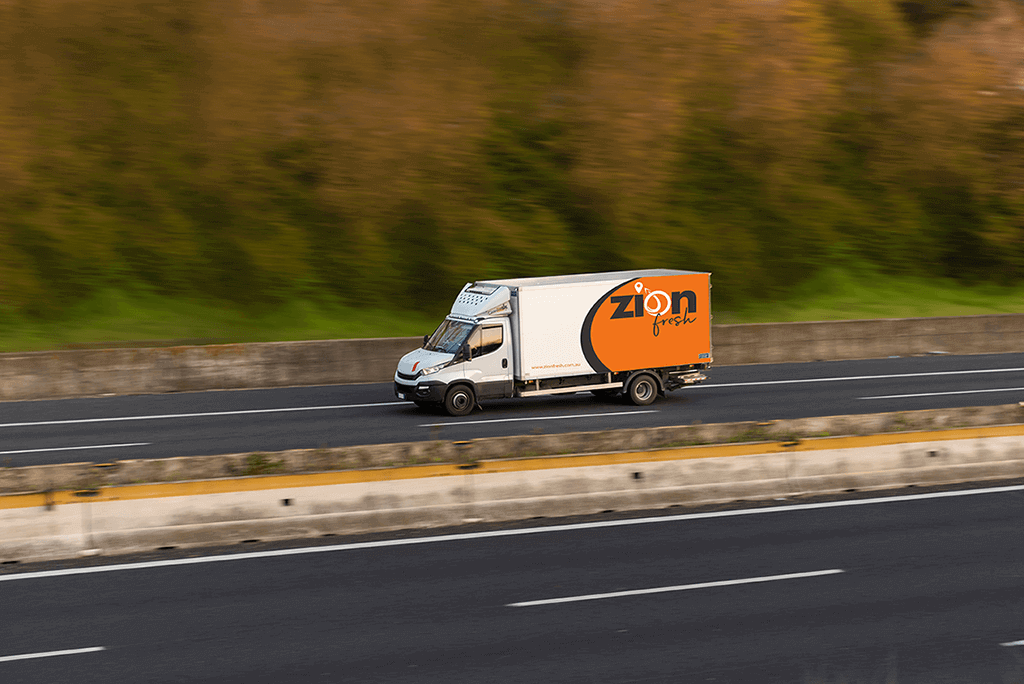Types of Vehicles Used by Refrigerated Transport Companies

The cold chain industry is rapidly evolving. It is a vital part of the economy in Australia, helping preserve and transport perishable goods such as fresh produce, dairy products, and pharmaceuticals. This industry is facing the challenges of increasing demand for temperature-controlled logistics these days. The vehicles they use are an essential factor in determining the safe and efficient transport of the products. Here in this article, we present the various types of transportation that refrigerated transport companies use.
Complete freezer transport
A complete freezer vehicle is a standard and specialised transport used in the cold chain industry. It is basically a refrigerated truck or trailer fully converted into a freezer unit. The temperature inside the unit can be as low as -30°C (-22°F). It can be adjusted according to the type of goods being transported.
These vehicles transport goods such as frozen food, ice cream, and other frozen items. It is powered by electricity or diesel. It cools or freezes the cargo area to the required temperature, and a digital thermostat and temperature recorder control it. The cargo area is also fully insulated to help maintain the temperature and prevent heat infiltration.
Complete freezer transports are often used by companies such as food processors, ice cream manufacturers, and food service providers. The trailers are usually equipped with unique loading dock levellers that help ensure the temperature inside them during loading and unloading.
They are built with heavy-duty suspension and tires to handle the added weight of the refrigeration unit and the frozen cargo. They have additional safety features such as rear-view cameras and alarms to alert the driver if the temperature in the cargo area goes outside the desired range.
Semi-Freezer transports
Semi-freezer vehicles are another transport system used for perishable goods. They usually come with a refrigeration unit and insulation to maintain temperatures as low as -20°C (-4°F). The thermal reading can be adjusted according to the type of goods transported.
The refrigeration unit in these transport systems is typically a diesel-powered unit that can cool or freeze the cargo area. Insulation is used in the cargo area to help maintain the temperature and prevent heat infiltration. The refrigeration unit is controlled by a digital thermostat and temperature recorder, which allows the driver to monitor and adjust the heat inside the vehicle. They have heavy-duty suspension and wheels to handle the additional weight of cargo.
Insulation-only vans
Insulation-only vans are one of those options that are used both for perishable and non-perishable goods. They are typically equipped with thick insulation (usually 55mm) that helps to maintain a specific temperature range inside the van. Insulation vans are available in different sizes and payload capacities to meet the requirements of different types of businesses.
They generally have an insulated cargo area reinforced with polyurethane foam, polystyrene, or polyisocyanurate panels. These materials provide excellent thermal insulation and help to maintain the desired temperature inside the van. These vans are used by many industries, including food and beverage companies, especially those who need to transport goods over a short distance. Raw meats and fish usually need a high refrigeration system, and an insulation-only van can’t be the best fit for these foods.
Chiller conversion vehicles
Chiller conversion vehicles are typically vans or trucks that have been converted to include a refrigeration system and are used to transport goods that need to be kept at specific temperatures, such as frozen or chilled food items. Depending on the transport needs, they can be equipped with either a fixed or a portable refrigeration unit.
They are available in different sizes and payload capacities to meet the specific requirements of other businesses. Some transports may have a built-in generator to power the refrigeration unit and provide extra cooling power when the van is stopped or idling. They also have thermometers and temperature recorders that allow drivers and dispatchers to monitor the thermal reading inside the vehicle.
In addition to their temperature-controlled cargo area, many chiller conversion vehicles also have additional safety features, such as rear-view cameras and alarms that alert the driver if the temperature in the cargo area goes outside the desired range.
Refrigerated lorry
A refrigerated lorry, also known as a refrigerated truck, uses the same technology as a refrigerated van but with a larger storage capacity. These lorries can range in size from 3.5 to 26 tonnes and can transport a larger quantity of goods at once. They can come in different styles, like an integrated refrigerated unit on the lorry or a separate refrigerated trailer that can be attached to a large goods vehicle. These vehicles often can divide the cargo area into two compartments, one for frozen goods and one for chilled goods, allowing for the safe transport of both types of perishable goods on the same journey.
Reefer ships
Reefer ships have particular holds and decks designed to accommodate reefer containers. These ships are also equipped with advanced refrigeration systems that can cool or freeze the cargo holds and maintain the desired temperature range for the voyage.
Many industries use reefer ships, including agriculture, food processing, and pharmaceuticals. They are often used for long-distance shipping routes, such as trans-oceanic voyages, and can carry large quantities of perishable goods simultaneously.
It’s important to note that Reefer ships are different from refrigerated ships. Refrigerated ships are ships with refrigeration equipment that can keep the compartment temperatures below freezing and are used to transport frozen goods like fish, seafood, and cryogenic cargo.
Passive shipping system
A passive shipping system refers to transporting perishable goods, such as food, pharmaceuticals, and other temperature-sensitive items. The weather inside the shipping container is not actively controlled. Instead, a material or substance with thermal insulation properties is used to slow down the rate at which the temperature inside the container changes. It works almost like insulation-only vans.
This system can be used with various containers, such as boxes, crates, or pallets. It can include insulation blankets, foam insulation, or phase change materials (PCMs). These materials are used to slow the transfer of heat into the container, keeping the goods inside at a more stable temperature for an extended time.
Passive shipping systems are often used when the transit time for the goods is relatively short or when the goods are not particularly temperature-sensitive. They are a cost-effective solution for companies that transport perishable goods and don’t require using expensive refrigerated shipping containers or vehicles.
It’s important to note that a passive shipping system doesn’t assure the preservation of temperature-sensitive goods for an extended period. In some cases, active temperature control systems are necessary to avoid spoilage, especially for lengthy transit times.
Summing all up, these are the common types of vehicles reputed refrigerated transport companies like Zion Fresh generally prefer to use. Besides that, in all vehicles for refrigerated transport, there are common aspects that must be taken into account, such as weight and measurements, the limitation of capacity, and the need to optimise fuel and safety.


